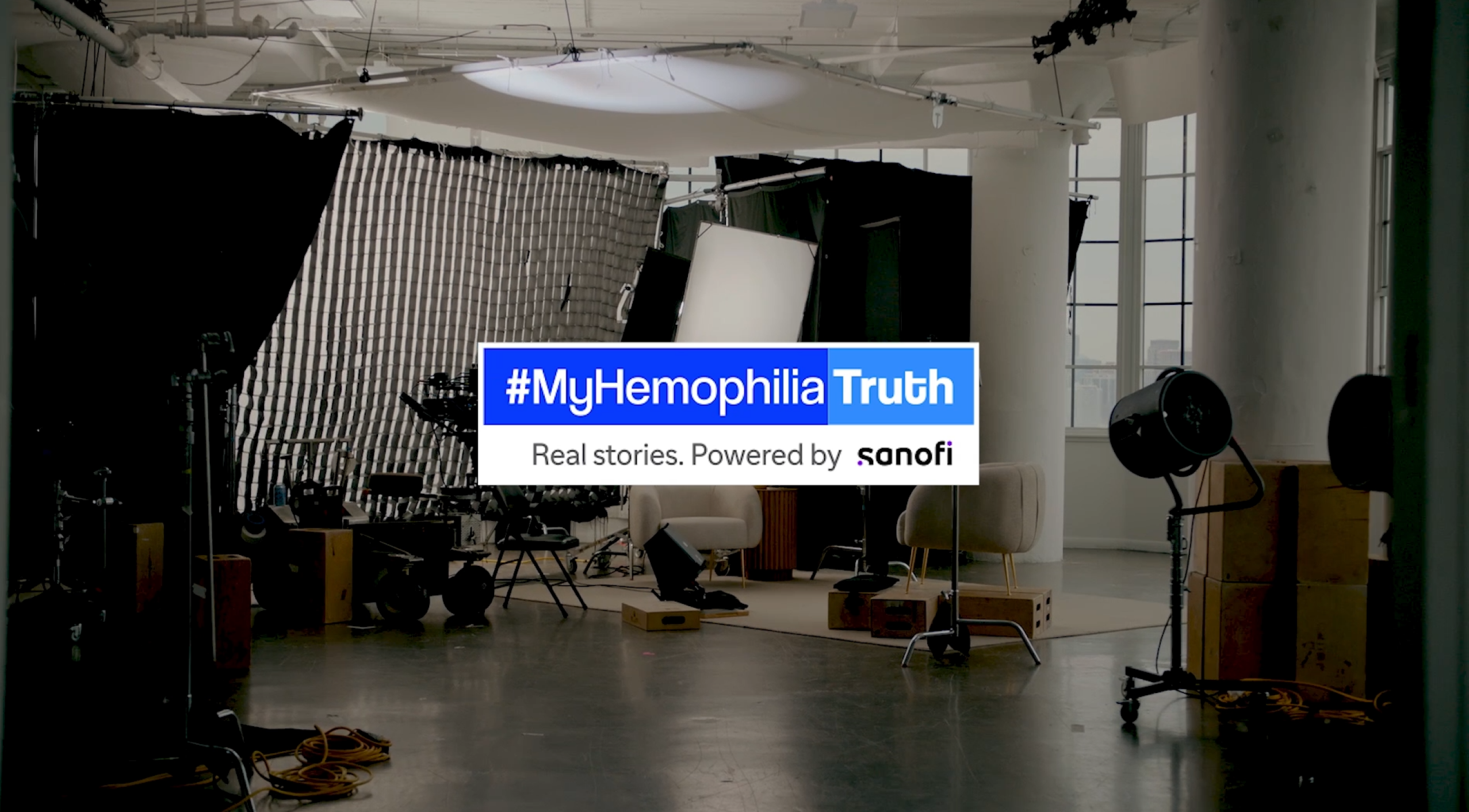Hemostasis requires a balance between procoagulants and anticoagulants, which is disrupted in hemophilia1,2
Without Hemophilia
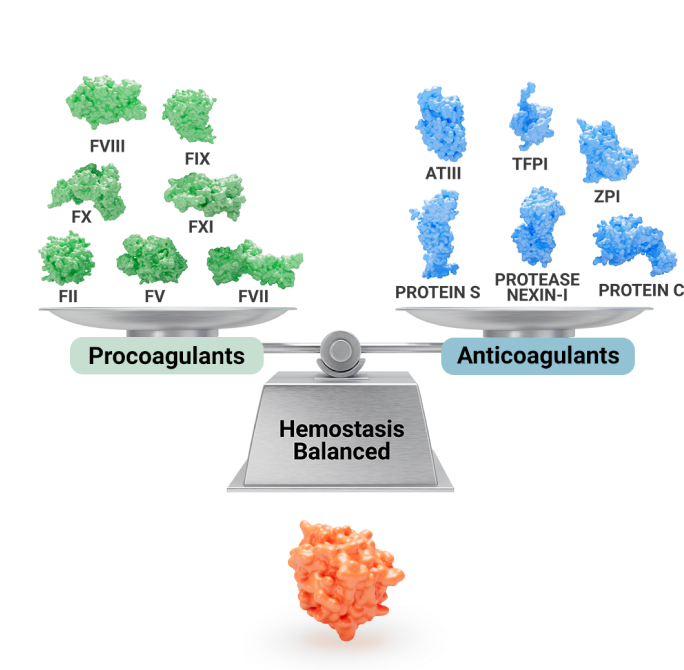
Sufficient Thrombin Generation
With Hemophilia
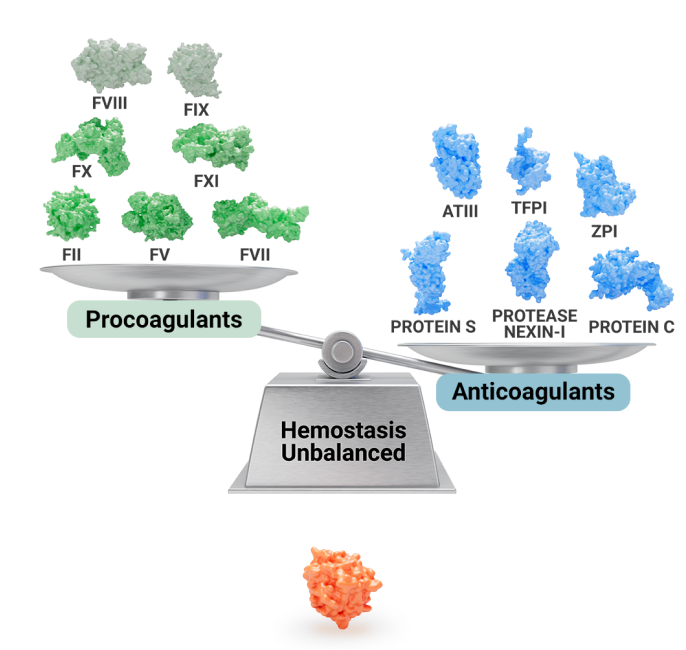
Insufficient Thrombin Generation
To achieve hemostasis, a balance is required between procoagulants and anticoagulants; this allows the body to generate sufficient thrombin to form a stable blood clot.1,2
- Thrombin plays a central role in coagulation and is essential to achieving and maintaining hemostasis2
- When hemostasis is out of balance, insufficient thrombin is generated, which leads to unstable clotting and excessive bleeding2
Innovative approaches to help rebalance hemostasis
Innovative rebalancing therapies may one day offer different types of nonfactor options1-3
Investigational rebalancing therapies are designed to promote the amount of thrombin in the body by lowering anticoagulants.
Achieving hemostasis and generating thrombin are critical to improved coagulation in hemophilia
Treatment of hemophilia has evolved over time, and rebalancing hemostasis and promoting thrombin generation may be achieved by targeting different parts of the coagulation cascade.4
- Investigational therapeutic approaches that act downstream in the clotting cascade–with the goal of rebalancing hemostasis and increasing thrombin generation–may expand the ways in which hemophilia is managed1,5,6
- Rather than increasing procoagulants, innovative approaches that lower anticoagulants, such as antithrombin or tissue factor pathway inhibitor (TFPI), may help improve thrombin generation and rebalance hemostasis4
Antithrombin is an anticoagulant and a major inhibitor of thrombin
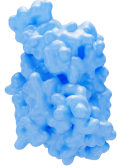
Activated antithrombin inhibits coagulation by inactivating thrombin and FXa and, to a lesser extent, FIXa, FXIa, FXIIa, and other procoagulants.6,7
Inhibition of antithrombin activity promotes thrombin generation, leading to an increase in fibrin clot formation.2,6
Rebalancing therapy that targets antithrombin is currently under investigation in clinical trials.1,6
TFPI, an anticoagulant protein, inhibits the initiation of coagulation before thrombin is generated
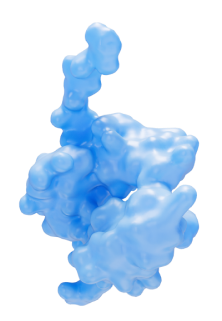
TFPI inhibits the complexes that assemble early in a procoagulant response, reducing thrombin generation and resulting in the bleeding experienced by people living with hemophilia (PwH).8
Rebalancing therapies that target TFPI are currently under investigation in clinical trials.1
Innovative approaches that target different parts of the coagulation cascade may help achieve hemostasis.1,2,6

Addressing the imbalance in hemostasis caused by hemophilia
Thrombin generation: the goal of hemophilia treatments
There are different types of treatment approaches for hemophilia that promote thrombin generation. These include1,2,5:
- Factor replacement therapy
- Nonfactor therapy
- Gene therapy
Factor mimetic therapy is one type of nonfactor therapy.1-3
- Factor mimetic therapy is designed to promote the amount of thrombin in the body by mimicking the activity of factor VIII
Current treatment approaches
- Are administered intravenously and require regular infusions to maintain factor levels1,9
- May cause some people to develop inhibitors10,11
- There is currently no factor mimetic therapy available for people living with hemophilia B
- Some people taking factor mimetic therapy may experience breakthrough bleeds and need supplemental on-demand therapy to achieve hemostasis1,13
- Recurrent monitoring of factor activity is recommended to follow the patient's response
- Continued lifetime follow-up and monitoring is recommended
- Additional treatment with steroids or other immunosuppressants may be required
- Abstention from alcohol for 6-12 months is recommended
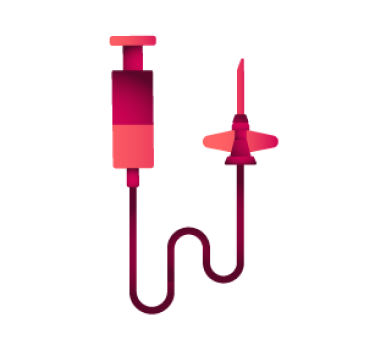
Clotting factor replacement therapy . . .
... is the standard treatment for hemophilia and is generally safe and effective for treating and preventing bleeds.1
Individual factor levels in people receiving factor prophylaxis can be measured to help determine the risk of bleeding.1
Clotting factor replacement treatments:
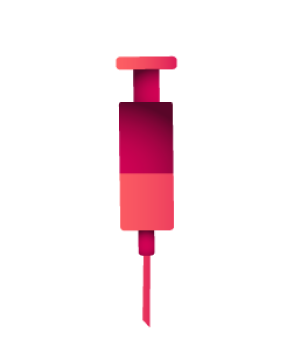
Factor mimetic therapy . . .
... has been shown to provide bleed protection in people living with hemophilia A, irrespective of inhibitor status.12
Factor mimetic prophylaxis is administered by a subcutaneous injection and has weight-based dosing.12
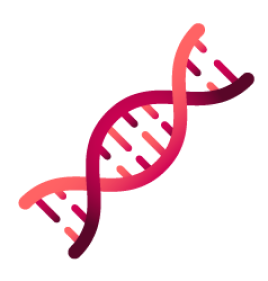
Gene therapy . . .
... is a one-time systemic treatment that works by replacing the missing or faulty gene responsible for the production of factor VIII for hemophilia A or factor IX for hemophilia B.14,15
While currently available gene therapies for hemophilia are not curative and re-dosing is not possible, they may provide an effective long-term treatment option for eligible adults living with hemophilia.14-16
After receiving gene therapy14,15:
What could conversations about the whole experience mean for PwH?
Each patient story reflects the real-life experiences of individuals diagnosed with hemophilia. Individual experiences may vary. These patients were compensated for their time creating this content.
References: 1. Srivastava A, et al. Haemophilia. 2020;26(suppl 6):1-158. 2. Negrier C, et al. Blood Rev. 2019;38:100582. 3. Ellsworth P, Ma A. Hematology Am Soc Hematol Educ Program. 2021;2021(1):219-225. 4. Korte W, Graf L. Transfus Med Hemother. 2018;45(2):92-96. 5. Okaygoun D, et al. J Biomed Sci. 2021;28(1):64. 6. Zhao Y, et al. Pediatr Blood Cancer. 2021;68(5):e28934. 7. Patnaik MM, Moll S. Haemophilia. 2008;14(6):1229-1239. 8. Mast AE, Ruf W. J Thromb Haemost. 2022;20(6):1290-1300. 9. Berntorp E, et al. Blood Rev. 2021;50:100852. 10. Ljung R, et al. Eur J Haematol. 2019;102(2):111-122. 11. Butterfield JSS, et al. Mol Ther. 2020;28(4):997-1015. 12. Hemlibra. Prescribing information. Genentech, Inc; 2022. 13. Cafuir L, et al. Expert Rev Hematol. 2019;12(7):515-524. 14. Roctavian. Prescribing information. BioMarin Pharmaceutical Inc; 2023. 15. Hemgenix. Prescribing information. CSL Behring LLC; 2022. 16. Leebeek FWG, Miesbach W. Blood. 2021;138(11):923-931.
MAT-US-2307283-v1.0-11/2023
Last Updated: November 2023

